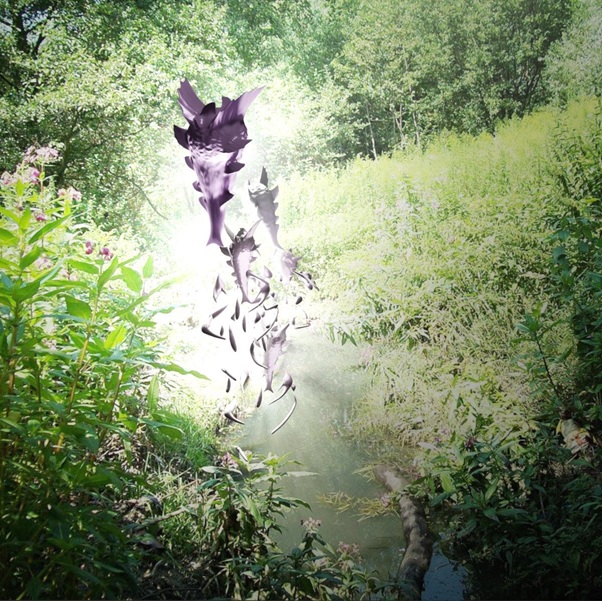001
2022
001
2022
2022
An interactive environment created using 3ds max and Unreal software. The project puts the player in the role of a castaway who finds himself on a deserted island overgrown with tall bushes and inhabited by insect-like creatures. The person using the project finds a collection of elements that are interpretations of children’s toys, remnants of the Anthropocene and whirling insects, accompanied by the melody of a lullaby. These objects allude to the need for arrangement and redirection of attention, which is reinforced in humans from birth as a cure for anxiety and loneliness.
In the island’s playground, the player must manipulate objects to move through the environment. The process of rearranging the island’s elements involves clearing, depositing and changing the current of the river surrounding the island, which leads to a reduction in the insect population and then lowering the water level. Every move of the player, that is, every interference with the island’s ecosystem has negative consequences, and the player is responsible for his impact on the environment.
The project refers to the disastrous hydrological situation in Poland. It is contributed not only by climate change, but primarily by human activity. Catchment areas – i.e. areas from which water flows down watercourses into a single body of water, such as seas, rivers and lakes – have been heavily transformed and improperly drained. This, combined with heavy rains, prolonged periods of drought and faulty hydrological measures, means that most water is lost irretrievably. The water footprint of a statistical Pole is nearly 4,000 liters, and 80% of consumption comes from surface water. As a consequence of these factors, 50% of the country’s land area is at risk of drought and could become a desert in the future.
https://izakoczanowska.com/Evaporation


